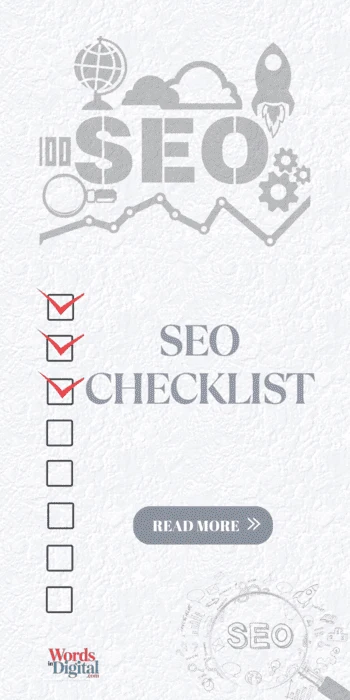
1. What Are Topic Clusters?
In the world of digital marketing and search engine optimization (SEO), comprehensive and strategic content production is vital for online visibility and user engagement.
Users are now moving beyond traditional keyword-focused queries, instead using longer, more conversational, and complex phrases for their searches.
The rise of voice search has further accelerated this shift.
Search engines, thanks to AI and machine learning-powered algorithms, can now interpret not only keywords but also the intent and contextual meaning of queries.
This means they evaluate a wide range of elements, including the core search term, synonyms, subtopics, and related questions related to a subject.
With this change, the importance of high-quality, valuable content that focuses on the real needs of users has increased beyond the quantity of content production.
In order to adapt to this changing search environment and achieve more effective results, content strategies need to evolve from being keyword-centric to topic-centric.
This is where the “Topic Clusters Content Model” emerges as a powerful solution for modern SEO and content marketing.

Topic clusters are based on the strategic grouping and internal linking of related content around a main topic or theme.
This model aims to create a comprehensive and in-depth resource on a topic rather than creating standalone content pieces.
This approach helps search engines easily understand the relationships and hierarchy of content on your site, while also providing users with a logical and seamless path to the information they are seeking.
This strategy helps a website demonstrate its expertise, experience, authority, and trustworthiness (E-E-A-T) on a specific topic.
2. How to Create Topic Clusters?
A typical topic cluster model consists of three main components:
2.1. Pillar Page (Main Topic Page):
Definition and Function: A pillar page is a comprehensive piece of content that covers a broad topic in depth and serves as a central resource for that topic. It provides an overview of the topic’s fundamental aspects and directs visitors to related, more detailed subtopics.
It is typically a lengthy blog post or web page (approximately 2,000 to 5,000 words).
Purpose: The primary purpose of the pillar page is to keep the user on the page by providing all the information they seek about the topic in one place.
All content should be search engine-friendly and accessible to visitors without requiring them to fill out any forms (ungated).
Qualities: It should cover the topic comprehensively, but not delve too deeply into specific questions, as that is the role of the subtopics.
It should include synonyms as well as keywords so that users can find it through different search queries.
As an analogy, it can be thought of as the main branch of a tree.
2.2. Cluster Content / Supporting Pages:
Definition and Function: These pages are independent pieces of content that delve deeper into more specific subtopics or aspects of the main topic covered on the pillar page.
Each cluster content targets a specific search intent and is typically built around lower-volume, long-tail keywords.
Purpose: To answer users’ more niche questions and expand the scope of the pillar page.
Characteristics: These pages provide detailed information on the topic and are often shorter than the pillar page (~1,000 words).
They can be thought of as the fruits or flowers of the tree.
2.3.Internal Linking Structure:
Definition and Function: One of the most critical elements of the topic cluster strategy is strategically linking all pages within the cluster to each other and to the pillar page.
These internal links show search engines how the website’s content is related to each other and the hierarchy of the site.
Mechanism: Each cluster content page links back to the pillar page using keyword-rich anchor text.
At the same time, the pillar page also contains links to related cluster content pages.
This two-way linking helps distribute page authority within the cluster and supports better search engine rankings for the entire cluster.
Benefits: It enables users to easily access the information they are looking for on the site.
It allows search engine bots to crawl the site more efficiently and understand the contextual relationships of the content.
Prevents keyword cannibalization, i.e., multiple pages competing for the same keyword.
Pro tip: When internal linking, do not link to content outside the topic cluster. If there are any existing links, they should be identified and removed.
 Semrush Blog Topic Clusters Example
Semrush Blog Topic Clusters Example
Frequently Asked Questions
What is a topic cluster?
A topic cluster is based on the principle of strategically grouping and internally linking related content around a main topic or theme.
This strategy creates a content network by bringing together a series of related subtopics (cluster content) that support and elaborate on a main topic (pillar content).
The goal is to provide in-depth and comprehensive information on a topic, demonstrating to search engines that your website is an authority on that subject.
Unlike the old keyword-focused strategy, this approach focuses on better understanding users’ search intent and providing them with a more valuable content experience.
How Do Content Clusters Improve User Experience?
Topic clusters enable users to find the information they are looking for more easily and quickly.
Logical connections between pieces of content and a clear hierarchy allow users to explore a topic in depth.
When a user is looking for information on a subtopic, they can be easily directed to other related topics and the main guide.
This structure increases user satisfaction by providing consistent and comprehensive information, as opposed to scattered and unrelated content.
How to Implement an Internal Linking Strategy with Content Clusters?
Internal linking is the most critical element of topic clusters. You should link from your main pillar content to all related cluster content. Similarly, it is essential to add a link back to the main pillar content from each cluster content article.
This reciprocal linking strategy helps search engines understand the hierarchy and relevance of the content. Internal links both increase the authority of the main content and strengthen your site’s overall SEO performance.
Summary:
Topic clusters and pillar pages offer a number of SEO advantages, including increasing website authority, improving internal link structure, preventing keyword cannibalization, improving user experience, and ensuring compliance with search engine algorithms.
The primary goal is to ensure that users can find all the information they are seeking in one place and to signal to search engines that your site is an authority on the subject, containing in-depth information.
You can share this article on social media or get a summary with ChatGPT / Perplexity:


 Share
Share X
X ChatGPT
ChatGPT Perplexity
Perplexity









